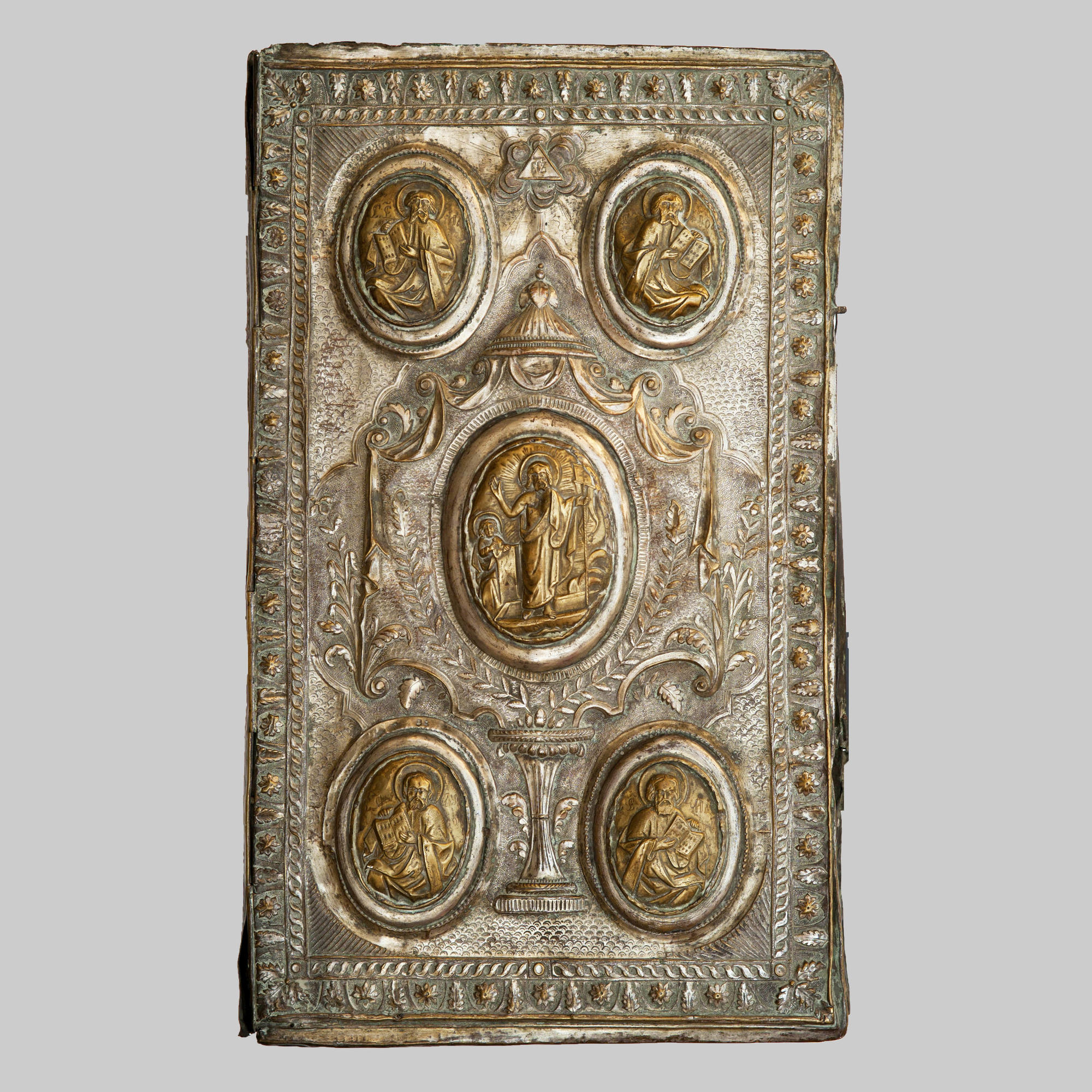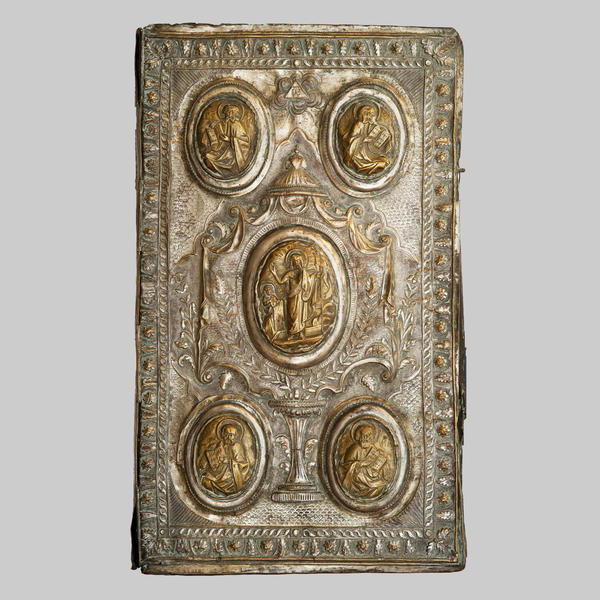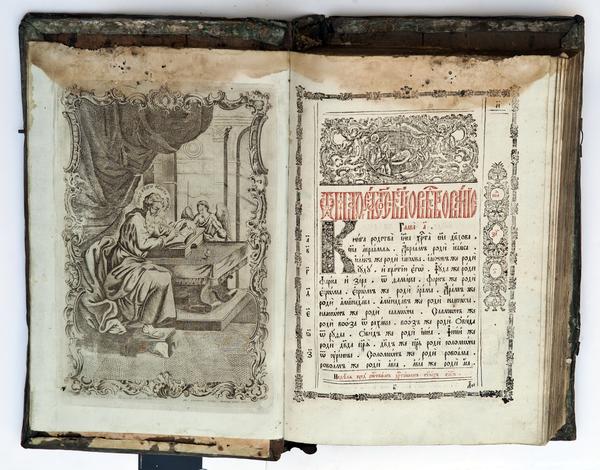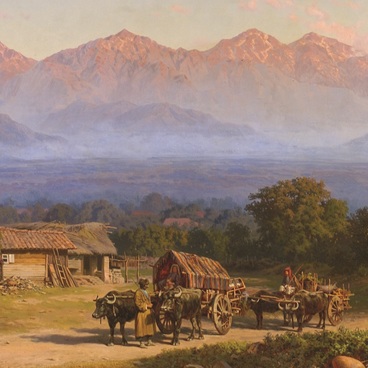The communion-table Gospel residing in the Stavropol Museum of Fine Arts, was published in 1800 in Moscow under the order of Emperor Paul I. The book was a new edition of the Gospel of 1766, drawn and printed under Catherin II.
The run of 1,200 copies was prepared by the Moscow Synodal printing-house. After the 1720s, it became the main centre of Cyrillic book print and also kept the traditions of Russian Church book etching. It formed its own painterly system with new techniques, stylistic and iconographic guidelines and a peculiar narrative series of illustrations.
The museum copy of the 1800 Gospel is in a good condition. It has 253 pages of text in Church Slavonic — the traditional Slavonic language of Church services. The pages are printed in two colours — black and red, and drawn in frames of lines and typesetting ornaments. Foliation is done with Arabic figures in the upper corners. Initials, illuminations, cul-de-lampes, and frames on the margins are ornamented.
The run of 1,200 copies was prepared by the Moscow Synodal printing-house. After the 1720s, it became the main centre of Cyrillic book print and also kept the traditions of Russian Church book etching. It formed its own painterly system with new techniques, stylistic and iconographic guidelines and a peculiar narrative series of illustrations.
The museum copy of the 1800 Gospel is in a good condition. It has 253 pages of text in Church Slavonic — the traditional Slavonic language of Church services. The pages are printed in two colours — black and red, and drawn in frames of lines and typesetting ornaments. Foliation is done with Arabic figures in the upper corners. Initials, illuminations, cul-de-lampes, and frames on the margins are ornamented.





